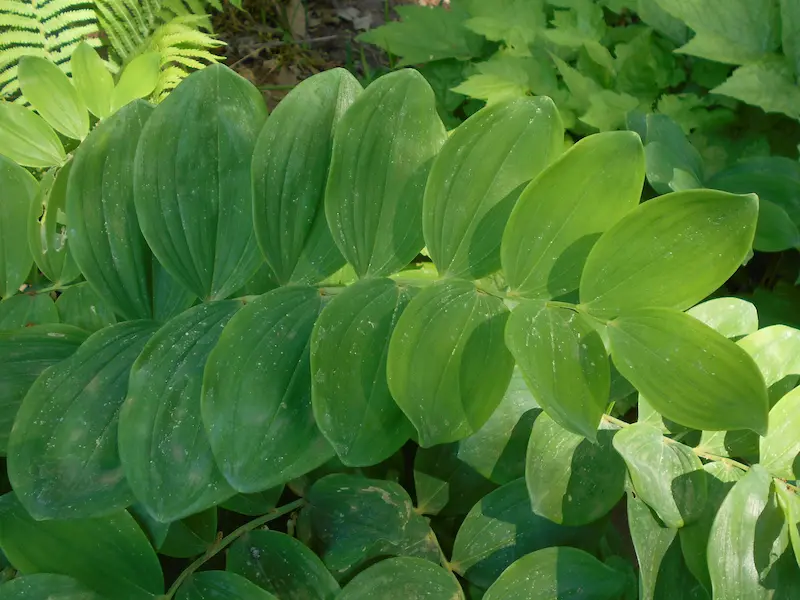Your cart is currently empty!
Red Oak is An Important Tree
The northern red oak is one of the most important trees for timber development in North America. Discover more facts on the Red Oak.
Your cart is currently empty!
Photo:
Jean Carr
Smooth Solomon’s Seal (Polygonatum commutatum) is a drought tolerant perennial for the shade garden, native to Ontraio and Eastern North America. It adds a unique architectural structure with its arching foliage and white bell shaped flowers that dangle along the leaves. It is rhizomatous with lustrous, alternate leaves.
You might be interested in learning more about the False Solomon Seal or the Starry Flase Solomon Seal.
Botanical Name: Polygonatum biflorum
Also Called: Great Solomon’s-seal, Solomon’s seal
En français: Sceau de Salomon
See More Plants in this Botanical Family:
Colour:
Sun / Shade:
Water: Moist (careful not to over water)
Height:
Width:
Pollinators:
In autumn the leaves of Solomon’s seal turn a vivid and saturated yellow, shading fat purple fruit, and adding unexpected perennial color to the chilling garden.

Easily grown in part shade to full shade in ordinary, medium-to-moist, well-drained soil. Soils should be wet and humusy. In ideal growing conditions, rhizomes slowly expand to create colonies.
In the spring and fall, you can divide the plant’s thick roots. Carefully dig out the rhizomes and separate parts from the knotty root segments. Transplant them to other parts of the garden.
Smooth solomon’s seal may be found in nature along forest borders, woods, meadows and fields, and woodlands. It is suitable for use in a cottage garden with slightly shaded borders or in rock gardens. Astilbe and ferns are good companion plants.
The northern red oak is one of the most important trees for timber development in North America. Discover more facts on the Red Oak.
The impressive Asiatic Lily is relatively easy to grow. Here are tips to be successful in producing and maintaining gorgeous blooms.
Oh, Borage, I love this herb! I am hoping that you will try planting it next year in your garden or in pots.
Reference pages for everything Apple
Explore a collection of native trees that add beauty to urban landscapes while supporting local ecosystems with flowers and fruits that attract pollinators and birds.
American Beech likes full sun at maturity and tolerates shade when young. Large space is necessary for wide-spreading root system.
GardeningCalendar.ca gets some funding from advertisers. If you click on links and advertisements at no cost to you, the site may receive a small commission that helps fund its operation.
© 2025 J&S Calendars Ltd.